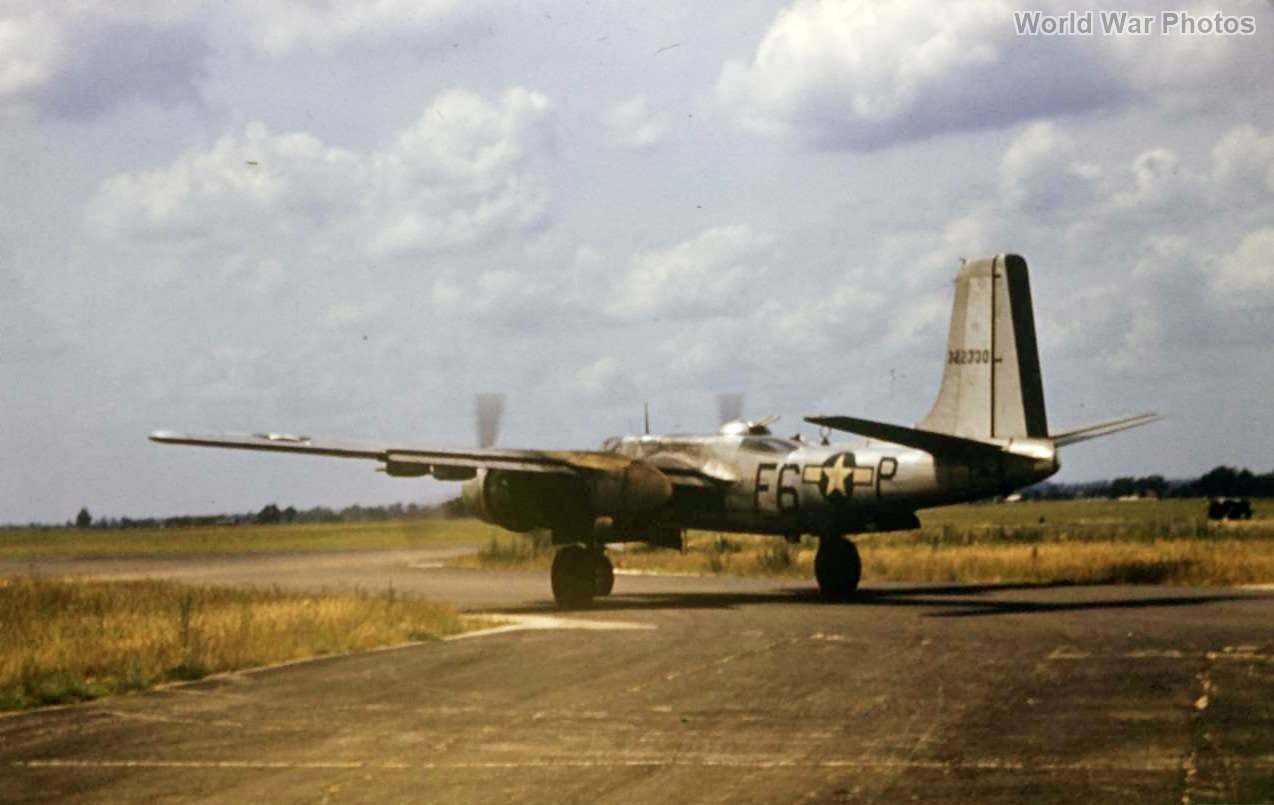The 416th Bomb Group (416th BG) was a crucial part of the Ninth Air Force during World War II, known for its effective use of A-20 Havoc and later A-26 Invader aircraft. The group played a significant role in several key campaigns in the European Theater, from the lead-up to D-Day to the final Allied offensives in Germany.
Operational History
Arrival and Early Operations:
- The 416th BG arrived in England in January and February 1944 and began combat operations in March 1944. Despite initially having only 55 serviceable A-20s out of an allocated 126, the group immediately began attacking V-1 flying bomb sites in the Pas-de-Calais region, as well as other strategic targets along the northern coast of France.
Pre-D-Day and D-Day Operations:
- The group concentrated on bombing coastal defenses and airfields in northern France until the D-Day invasion on June 6, 1944. On D-Day and in the days following, the 416th BG focused on disrupting German supply and communication lines by targeting railway yards, roads, and bridges.
Support for Ground Forces:
- In July 1944, the 416th BG supported the Allied breakthrough at St. Lo. This effort was followed by operations against German forces retreating through the Falaise Gap in early August. The group’s significant contributions during these operations earned it a Distinguished Unit Citation (DUC) for actions between August 6-9, 1944.
- After moving to France in September 1944, the group targeted Brest docks and radar stations, and participated in the airborne assault on Holland (Operation Market Garden).
Conversion to A-26 Invaders and Late-War Operations:
- In November 1944, the 416th BG converted to the A-26 Invader aircraft. With these more advanced bombers, the group participated in the Battle of the Bulge, focusing on attacking German lines of communication, troop movements, and defensive positions.
- In early 1945, the group supported the Allied crossing of the Rhine River by bombing flak positions and other strategic targets in Germany, continuing to operate until the end of the war in Europe.
Post-War Activity:
- After VE-Day, the 416th BG returned to the United States between July and October 1945 and was subsequently inactivated. The group’s A-26 Invaders were shipped to the Far East, but the end of the war in the Pacific meant they were not used in combat there.
Squadrons and Codes
- 668th Bombardment Squadron (BS): 5H
- 669th Bombardment Squadron (BS): 2A
- 670th Bombardment Squadron (BS): F6
- 671st Bombardment Squadron (BS): 5C
Bases
- England:
- Wethersfield, Essex: 1 February 1944
- France:
- Melun/Villaroche, Ile-de-France: 21 September 1944
- Laon/Athies, Picardie: 10 February 1945 and 27 July 1945
- Cormeilles-en-Vexin, Ile-de-France: 25 May 1945
Commanding Officers
- Col. Harold L. Mace: Commanded from October 1943
- Col. Theodore R. Aylesworth: Took command on 3 August 1944
Aircraft
- A-20 Havoc: January 1944 – November 1944
- A-26 Invader: November 1944 – July 1945
Unit Decorations
- Distinguished Unit Citation (DUC): Awarded for operations in France, 6-9 August 1944.
Aircraft Markings
- The 416th BG aircraft were marked with a white band along the trailing edge of the rudder and colored propeller bosses. These markings were applied to both the A-20 and A-26 aircraft. The group adhered to Ninth Air Force specifications for tactical markings, using white paint on camouflaged surfaces and black on natural metal finishes.
